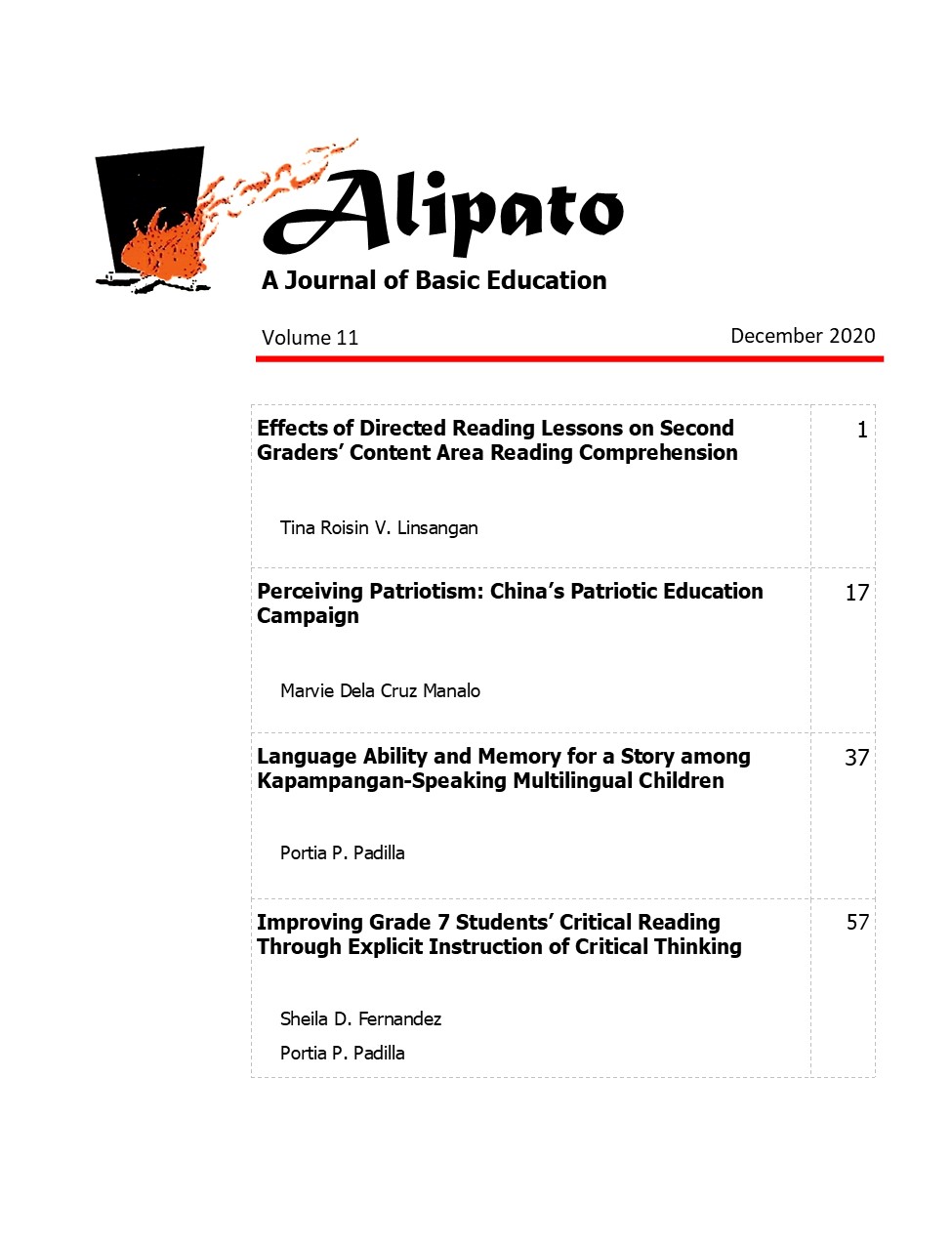Improving Grade 7 Students’ Critical Reading Through Explicit Instruction of Critical Thinking
Abstract
The proliferation of mis/disinformation and the propagation of biases and prejudices require reading from a critical stance. To read critically, one needs to think critically about texts. By reading critically, one exercises the power to question, challenge, and reflect on the ideals and even the status quo (re)presented in texts. This quasi-experimental pretest-posttest within-subjects study aimed to investigate whether the explicit instruction of critical thinking skills could improve critical reading. A class of 32 seventh graders was exposed to explicit critical thinking instruction for 17 sessions across six weeks, focusing on Paul and Elder’s (2008) elements of reasoning. Paired samples t-test results revealed a significant increase in critical reading after the intervention. The top three critical reading components with the highest mean gains were: 1) examining arguments or the language of the text, 2) identifying implications or consequences, and 3) identifying the author’s purpose or motive. It is concluded that explicit instruction of critical thinking is effective in developing critical reading.
Keywords: explicit instruction, critical reading, critical thinking


